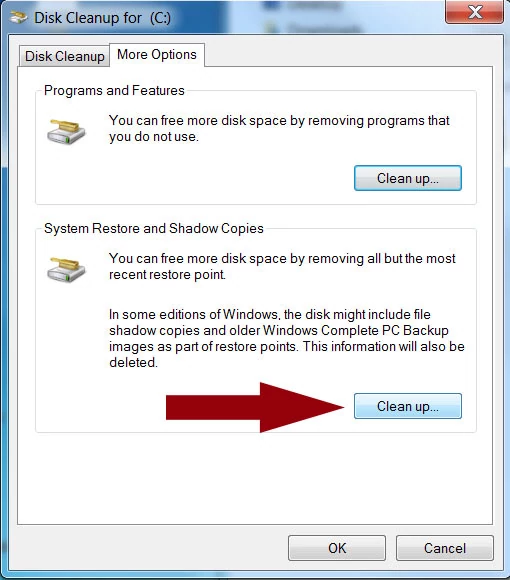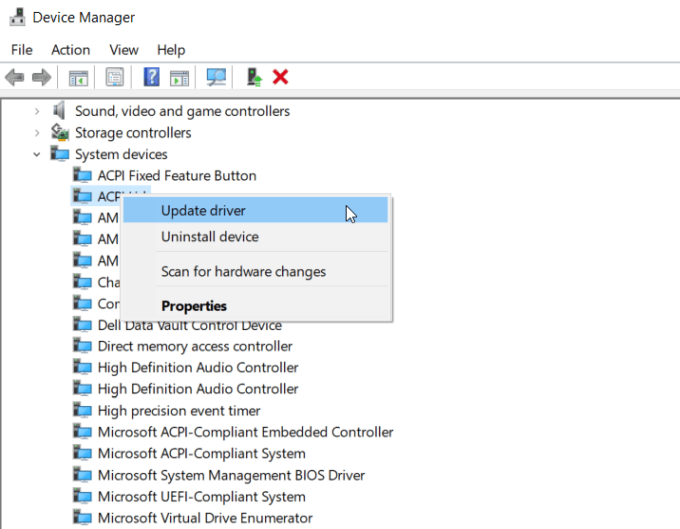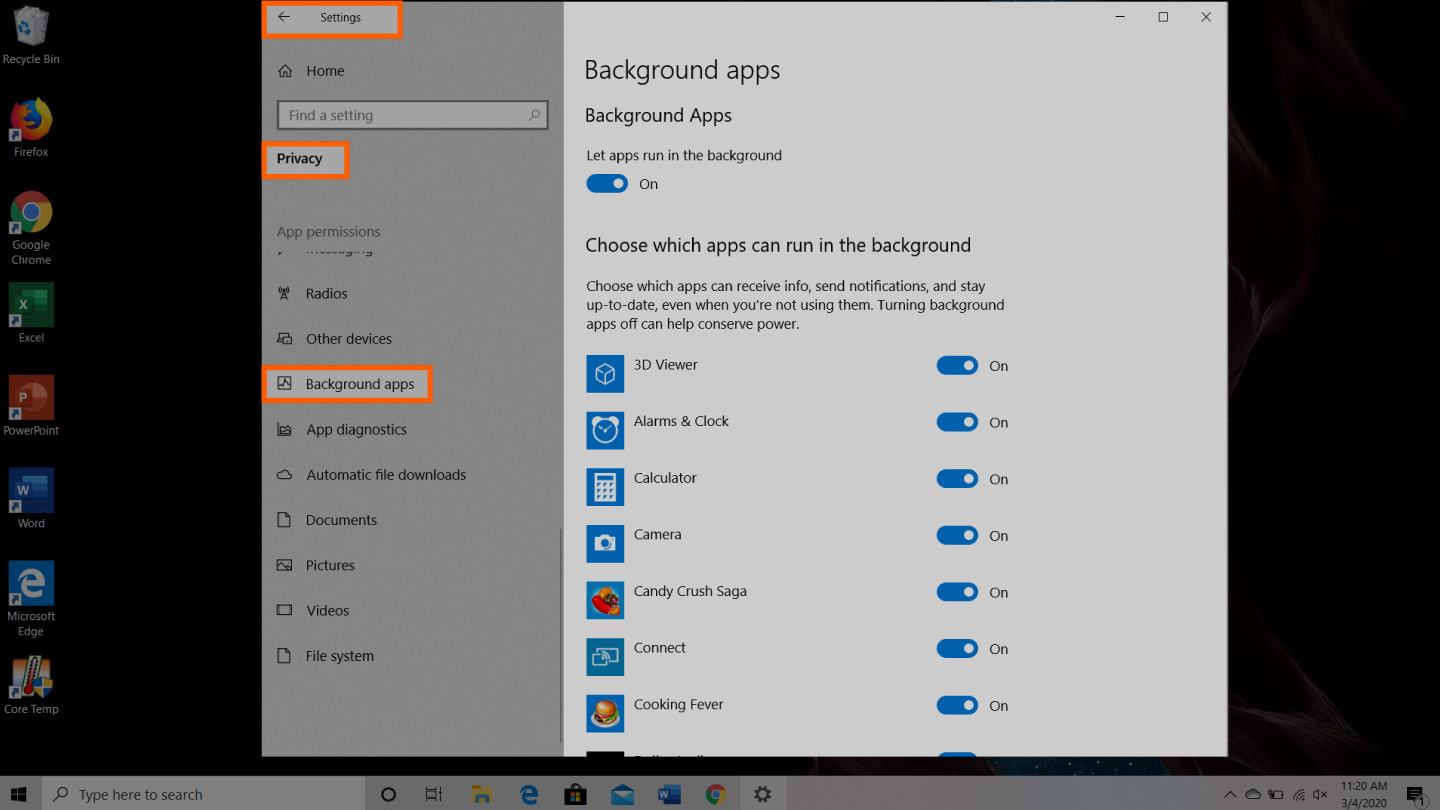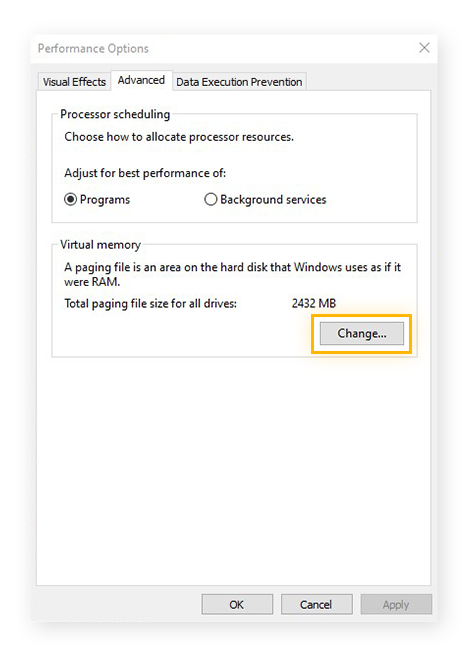- Clean Out Memory
- How To Clean Up My Computer Memory
- How To Clean My Computer Memory
- How To Clean Up My Memory On My Computer
- How Do I Wipe My Computer Memory
- How To Clean My Laptop Memory
- How Can I Wipe My Computer Memory
Windows PC Clean Tips
Fix Computer is Slow
Windows Cleanup Tips
Restarting your PC will also completely clear the RAM and restart all running processes. While this obviously won't increase the maximum RAM available, it will clean up processes running in the background that could be eating up your memory.
Speed Up Windows PC
No matter how hard you try to keep your Windows 10 machine clean, eventually it will collect many types of junk files and other unwanted stuff. It then becomes a real headache to get rid of all of these unwanted files from your machine. Fortunately, though, there are some ways you can use to remove these unwanted files and data from your computer.
In the following guide, you are going to learn what are the items taking up your memory space and how you can clean up your Windows 10 PC. It shows multiple cleaning methods so you can be sure there is no junk left on your computer.
Delete unnecessary files from your computer The “Temp” and “Prefetch” folders on your laptop hold some unnecessary files that slow down your computer’s performance by taking up both memory and storage space. By cleaning up these folders, your laptop will run more efficiently thanks to less memory usage. Open Start menu and choose Settings. On the Settings menu, tap on System. Tap on Apps & features on the left side menu. Tap on the application and choose Uninstall option. Check with your PC manufacturer to understand which USB ports your PC supports. If your PC has a CD, DVD, or Blu-ray Disc drive that can read and write to a blank disc, you can use the drive to store data, much like an SD or USB flash drive. Here's how: When you insert a blank disc into the PC, choose Like a USB flash drive from.
Items Occupying Memory in Windows 10
First of all, let’s check out what are the items taking up the memory space on your computer. Once you have found these items, you can then learn how you can get rid of them from your PC.
Item 1. Files Downloaded from Internet
Internet is where everyone downloads their files from and you have likely downloaded a lot of files from there on your computer. If you have done so, it is likely there are a lot of single usage files residing in the downloads folder on your computer. These files may be occupying a large amount of your memory space.
Item 2. Full Recycle Bin
When a file is deleted from your computer, it goes straight to the Recycle Bin. Over the time, the Recycle Bin gets full and all of your deleted files continue to exist. These files do use some of the memory space on your computer.
Item 3. Temporary Files
Temporary files provide quick data to the applications installed on your computer. If the apps do not delete these files after their usage, you will have a number of these useless files sitting on your computer and utilizing your precious memory space.

Item 4. Unwanted Applications
It happens to many of you that you install an application, use it once, and then forget it forever. The app continues to exist on your machine and constantly uses your memory space. This adds to the clutter of your machine.
Item 5. Log Files
Many of the apps on your computer use log files to keep track of their activities. For most of the users out there, these log files are of no use but they do take up a good amount of your memory space.
How to Clean up Window 10
Now that you have learned what items are occupying your memory space and cluttering your PC, this section will tell you how you can clean up your computer running Windows 10.
There are a number of methods you can use to clean up your machine and the following are eight of those methods for you.
Method 1. Clean up Windows 10 – Delete Internet Files
In this method, what you need to do is open the folder where your Internet files are saved in, find the files you no longer need, and delete them from your computer. It sounds easy to do and it is and it does wonders for you.
Once you have removed the useless Internet files from your computer, have a look at the available memory space and you will be surprised.
Method 2. Clean up Windows 10 – Clean Up Recycle Bin
If you have been adding files to Recycle Bin but never fully cleaned it up, you may want to do it now. Cleaning up the Recycle Bin will remove all the files sitting in it permanently from your computer.

You can do it by right-clicking on the Recycle Bin icon on your desktop and choosing the Empty Recycle Bin option.
Method 3. Clean up Windows 10 – Remove Temporary Files
Disk Cleanup is one of the cleaning tools that comes preloaded on your PC and lets you remove unwanted files with a few clicks. It is extremely easy to use the tool as all you need to do is select what items to be removed from your system and hit submit.
You can search for Disk Cleanup from your search function to find and launch the utility on your PC.
Method 4. Clean up Windows 10 – Enable Storage Sense on Your PC
Storage sense is a built-in feature on your Windows 10 computer that allows you to automatically free-up memory space when you are running low on memory. Anonymous external attack v 1.0. Your computer does the cleaning task for you but first you need to enable the feature as shown below.
Clean up Windows 10 – Enable Storage Sense on Your PC
Open the Settings app on your PC and click on System followed by Storage. You will find a toggle under the Storage sense section. Simply turn the toggle to the ON position and the feature will be enabled on your PC.
Method 5. Clean up Windows 10 – Turn Off Hibernate
Hibernate provides you with a quick way to get back to your computer after you have put it in sleep mode. In order to do that, the feature saves states of all the running apps on your computer. It adds to the clutter of your machine and therefore you should keep the feature turned off if you wish to unclutter your computer.
To disable hibernate on your PC, press the Windows + X key and select Command Prompt (Admin). Type in the powercfg.exe /h off command hit Enter. The feature will be disabled.
Method 6. Clean up Windows 10 – Upload Files to Cloud Storage
With the availability of a number of cloud storage providers, you should consider storing your files on the cloud rather than on your local storage. This will give you more space to play with on your Windows 10 computer and you can always fetch the files you want from your cloud provider.
Method 7. Clean up Windows 10 – Uninstall Apps You Don’t Use
Apps are big time memory sucker and if you have a lot of these installed on your computer, you may want to remove the ones you no longer use. It can be done from the Settings app or Control Panel.
Method 8. Clean up Windows 10 – Remove Junk Files
If you would not prefer performing a manual search for junk files on your computer, you can use a dedicated app to clean up your machine.
One of these apps is Ashampoo WinOptimizer that cleans up and optimizes your system for an improved performance. It is extremely easy to use the app and it has tons of features to help you thoroughly clean your computer.
- Some of the features worth mentioning here are:
- Simple and easy one-click optimization.
- Automatically find and remove junk files from the PC.
- Optimize the Windows Registry so it works faster.
- Defrag your drives with the built-in feature.
If you would like to give a try to the app, the following is how you obtain and use it on your Windows 10 computer.
Step 1 Download and install the Ashampoo WinOptimizer tool on your computer. When it launches, click on the option that says Maintain system in the left hand side and then choose Drive Cleaner from the right side.
How to Clean Up Windows 10 – Step 1
Step 2 The following screen will tell you what junk files it can remove from your machine. Review the list and then click on the Delete now button to start removing those files on your computer.
Step 3 Once all the junk files are removed, the following message will be shown on your screen.That is how you clean up your Windows 10 PC using a nice little application.
How to Clean Up Windows 10 – Step 3
The Bottom Line
If your Windows 10 has become all cluttered and you can’t find a way to remove the clutter, the above guide will give you some ideas on how you can get rid of junk stuff and improve the overall performance of your computer.
Product-related questions? Contact Our Support Team to Get Quick Solution >
“No matter what I do, my Mac is still slow”, an average tech-consultant hears this phrase multiple times a day. Give a person even the most powerful computer, and pretty soon it will be cluttered with apps, extensions, and things that are too much for it to handle. To reverse it, one has to go back and сlean up the mess, removing memory agents one by one. Prepare for a fight — every byte of memory is at stake. So let’s put your Mac on a diet and get it more free RAM to breathe freely.
First, remove desktop clutter. Get a combination of Setapp apps that clear away unneeded desktop files.
Download Declutter Free“Your system has run out of application memory”
How do you know your Mac is low on memory? Floating “rainbow wheels” aside, you may notice your Mac now takes ages to load. You’ll also see many browser applications crashing. You’ll be also thrown warning messages as “Your system has run out of application memory”. To help it, you should first visit the Activity monitor to see memory usage on Mac.
How to check RAM usage on Mac
Go to Applications and type in Activity Monitor in the search bar. This invokes a good old Activity Monitor that should tell how much free memory you’ve got left.
A shortcut to open Activity Monitor:
Press F4 and start typing Activity Monitor in the search bar.

I’ve attached a screenshot from my Mac and as you can see my memory usage almost reached full capacity. Here’s what it all means:
App memory: taken by apps and processes
Wired memory: reserved by apps, can’t be freed up
Compressed: inactive, can be used by other apps
Swap used: memory used by macOS
Cached files: memory you can really use
Notice the colored graph under Memory Pressure. If your graph is all but red and yellow, your Mac is really gasping for fresh memory. It seems counter-intuitive, but “available memory” your Activity Monitor is not that important after all. In fact, it’s a system intended behavior to use all memory resources when available. On the contrary, the Memory Pressure graph is much more telling, so grow a habit to check this graph in the Activity Monitor every now and then.
How to check CPU usage on Mac
Open the CPU tab in Activity Monitor to keep in check CPU-heavy processes. Normally an app would be using 0-4% of CPU. If it takes abnormally more than that, go inside that particular item in the list and press the Quit button.
How to free up memory on Mac
Tip # 1. Remove Login Items to lower Mac memory usage
Login items are programs that load automatically upon Mac startup. Some of them covertly add themselves to the list and this is no good. If you’re looking to free up RAM, they are the first candidates for deletion. Don’t worry, you’re not deleting the app itself, you just stop it from auto-launching every time.
So, to remove Login Items and at the same time reduce your memory usage of your Mac, you need to:
- Open System Preferences and select Users & Groups.
- Click your nickname on the left.
- Select the Login Items tab.
- Check programs you don’t want to load as your Mac starts.
- Press the “–” sign below.
Now, you won’t see these apps pop up the moment you turn on your Mac. Although this method doesn’t require some superpowers of yours, some special Mac optimization and memory cleaner tools may do the job faster and ensure the smooth performance of your Mac. CleanMyMac X is an excellent example of such software. Here’s how to disable Login Items with CleanMyMac X:
- Download it for free and go to the Optimization tab.
- Check Login Items to see the list of apps that get opened when you start your Mac.
- Click Remove.
As you’ve already come to the Optimization module of CleanMyMac, you can also fix hung apps and heavy memory consumers there. In this way, you’ll free up the solid amount of RAM on Mac — 100% free of charge.
Tip # 2. Free up disk space if Mac is low on memory
Clean Out Memory
The available space on your Mac’s drive translates into virtual memory. This comes to save you when you’ve run out of physical RAM. So now your computer relies on your hard drive space to keep your apps going.
The classic geek rule of thumb holds it that you should keep at least 20% of disk space on your startup drive. Not only this potentially reduces your future spending on iCloud storage but it also keeps your Mac speedier.
What to delete to free up space:
- Large unused files, like movies
- Old downloads
- Rarely used applications
- System junk
But here’s a simpler solution to save your time — clean up your drive with CleanMyMac X— the app I’ve mentioned above. Many users recommend it as an excellent way to free up more space because it searches for large & old files, useless system files, Photo junk, mail attachments and shows everything you can safely delete. Interestingly, it finds about 74 GB of junk on an average computer.
Extra trick: How to free up RAM on Mac with CleanMyMac X
If you have downloaded CleanMyMac, you may also take advantage of its amazing feature — the ability to free up RAM in a few seconds. Try this next time you see “Your system has run out of application memory” message.
- Go to the Maintenance tab on the left.
- Click Free Up RAM.
- Click Run.
As simple as that!
How To Clean Up My Computer Memory
And you can do it even if you download a free version of the app.
Tip # 3. Clean up your Desktop
This tip always comes at the bottom of instructions and unfairly so as it is quite effective. Without even looking at your Desktop I would assume it’s cluttered with mountains of icons. Thing is, your macOS was designed in a way that it treats every Desktop icon as a little active window. The more icons, the heavier memory usage on Mac. So in order to release available memory resources, it’s recommended to keep your Desktop clean.
How To Clean My Computer Memory
You don’t have to do it all by yourself. With apps like Declutter and Spotless, every desktop cleaning session will be scheduled in advance and executed automatically. Your only job is to define the rules on how your files should be organized.
How To Clean Up My Memory On My Computer
Tip #4. Clear cache files
Another way to free up RAM on Mac is to clear it of cache files. Of course, it won’t save you gigabytes of space, but deleting cache regularly, you can help your Mac run faster and avoid system issues.
So, to remove cache files on your Mac, you need to:
- Open Finder.
- From the Go menu, select Go to Folder.
- Type ~/Library/Caches in the field and press Go.
- In the window that appears, you will see all your cache files.
- Press Command+A to select all files or delete files one by one.
- Enter your user name and password to confirm.
If you find some files still in the folder after you emptied it, maybe you have some windows open on your Mac. Just like that, you can save up some space on your Mac. Don’t forget to empty the bin afterward.
Tip # 5. Tune up Chrome’s Task Manager

Although Google Chrome is not the one to blame for massive memory usage, it can indeed affect your Mac's performance. If you use Chrome as your primary browser, you probably have many windows opened there. Chrome runs a lot of processes to ensure a fast browsing experience for you. So, it uses your RAM for storing your tabs, plugins, and extensions. Look at how many entries Google Chrome has in Activity Monitor:
How Do I Wipe My Computer Memory
The question then arises, 'Why does Chrome use so much RAM?' The thing is that each process is responsible for a separate plugin or extension of your browser. For example, when a tab unexpectedly falls, you need to refresh it to continue your work there. If one process were responsible for all tabs and extensions, you would need to restart the whole browser instead. Can you imagine how many times would you do that? That’s the proper answer to why Chrome uses so much RAM.
I’ve been using Chrome for some years only to discover (recently) that Chrome had a task manager of its own. You can use it to force quit memory-heavy processes in the browser. It’s a handy tool because it lets you see how a page weighs on CPU usage on a Mac.
- Go to Chrome settings (dotted icon in the top right corner)
- Click More tools -> Task Manager
To free up even more RAM, close the GPU process. The GPU Process, though helpful in theory to accelerate pages, eats up a considerable amount of memory. Click to end it to free up RAM on your Mac.

Tip # 6. Manage RAM usage with CleanMyMac X menu
CleanMyMac X has another useful and convenient feature for managing your Mac’s performance and memory usage. As you install CleanMyMac X and start it for the first time, it’s icon will appear in your menu bar. Click the icon to open the CleanMyMac X menu. Here you can find updates on the current condition of your Mac and perform quick tweaks to increase your Mac's speed. Whenever you feel like your Mac underperforms, open the CleanMyMac X menu to check how much RAM is available and free it up as well.
Tip # 7. Close Finder windows
Okay, suppose you’re still asking yourself, how do I clear RAM on my MacBook Pro/MacBook Air. The next trick is as magical (you’ll see for yourself) as it is time-saving. It’s no secret that each window in the Finder eats up RAM. But how many open windows are there? Some of them are collapsed or stacked in some blind spot on your screen. This Finder command merges all your windows into one. See how to do it:
Click on Finder > Window > Merge All Windows
Now you can manage Finder windows more effectively and free up memory on MacBook.
What else you can do to minimize memory usage on Mac
I’ve saved the easiest tips for the end, as long as these ones are self-explanatory.
- Replace AdBlock (very memory-demanding) with a lighter extension
- Keep fewer opened tabs in the browser
- Restart your Mac more often to free up RAM
- Close all hung-up print queues
That was my take on how to make your Mac a bit speedier to use. If you’re looking for more guidance, check simple ways to speed up your Mac.
How To Clean My Laptop Memory
Frequently Asked Questions
How Can I Wipe My Computer Memory
How to check application memory on Mac?
To check RAM usage on your Mac, go to Activity Monitor (Applications > Utilities). Bangla rabindra sangeet mp3 free download zip file. In the Memory tab, you will see all the active processes that are using your Mac’s RAM. At the end of the window, there is a Memory Used graph, which indicates how much application memory is used.
How to find out whether your Mac needs more RAM?
Your Mac may be using almost all its RAM, but you don’t need more if it’s using it efficiently. Open Activity Monitor and go to the Memory tab. The Memory Pressure graph shows the current condition of your RAM: green color means your Mac’s using RAM effectively, while yellow is a sign that some application or process is using too much of application memory. The red memory pressure signals that your Mac needs more RAM.
How to quickly free up RAM on your MacBook?
To free up RAM on your Mac, firstly, you should find out what app uses so much of your memory. The memory-heavy programs are listed in Activity Monitor, Memory tab. If there is an app you aren’t using at the moment, click it and press the “X” sign to quit it. This will, in turn, free some of the application memory.
